Hamedorea: types, cultivation and care
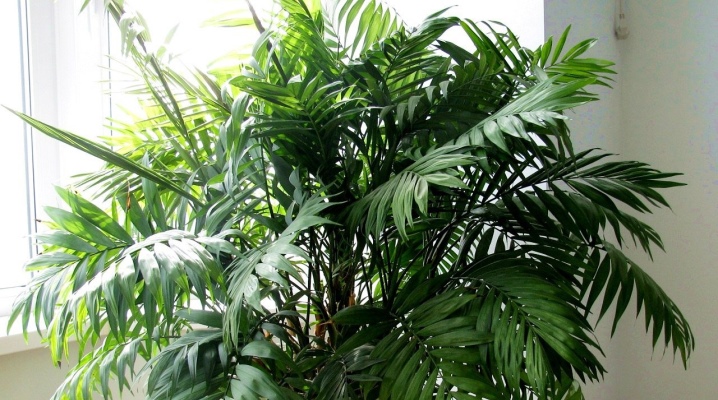
Hamedorea is a very interesting and attractive houseplant that is hard to ignore. An exotic palm tree can liven up almost any setting, as it looks very attractive and expressive. Let's figure out what this plant looks like and how to properly care for it.

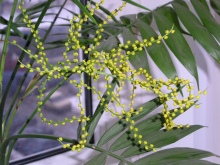
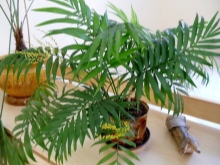
Description
Hamedoreya is also called bamboo palm or neanta. It is distinguished by its unpretentiousness and shade tolerance. Hamedorea grows very well at home, without requiring special treatment or expensive care. It grows quickly and looks bright.
The birthplace of hamedorea is the mountainous regions of Mexico and Central America... In their natural habitat, these are not very large, but graceful palms, the height of which can reach 2 m.The thickness of the stem rarely exceeds 3 cm.
Most widespread shrub varieties the plant in question. However, the species diversity of Hamedorea does not end there. There are attractive cultures related to to the class of vines, and plantshaving only 1 stem.
It should be borne in mind that shrub forms grow rather slowly. No more than 1-2 young leaves can be added per year.

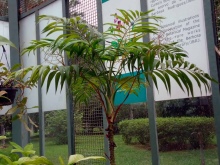
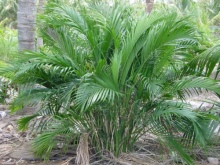
Plants of different sexes have a striking difference in flowers. In male crops, they grow rich red and yellow, gather in neat inflorescences. In female specimens, flowers are orange or bright red, they are solitary.
Currently, the culture in question has begun to be actively grown at home. Thus, flower growers create a small tropical corner in their own home. Hamedorea is highly decorative, which attracts the attention of many wildlife lovers.
The plant has oblong leaf plates of regular shapes. At home hamedorea can grow up to 1.5-2 m in height. A culture can achieve such indicators, even if no action has been taken on the part of the grower. Reaching serious growth values, the plant remains very graceful and attractive. In diameter, palms of this type rarely exceed 60-70 cm.
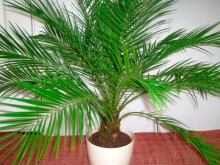
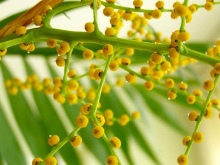
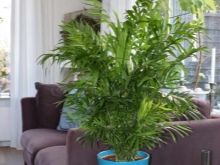
The plant in question blooms only once a year, while bearing fruits... There is no clear time interval for fruiting. This is due to the fact that in natural conditions for hamedorea, such stages depend on many factors - the amount of precipitation, the value of temperature indicators and many other things.
The flowers are only a few millimeters in size, but they are numerous. It so happens that they grow to several hundred. After some time after flowering, small berries are formed on the trunk, which outwardly resemble sea buckthorn, but only black in color. They can be eaten.
Moreover, these fruits are included in the national cuisines of many Latin American countries.
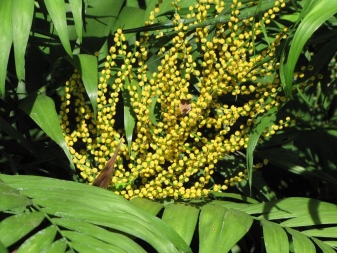
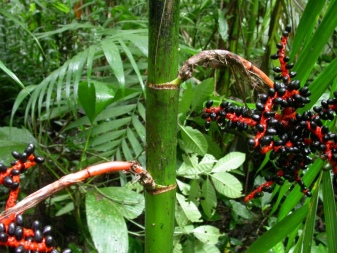
Views
As mentioned above, chamedorea is divided into many subspecies, each of which has its own appearance and growth characteristics. Let's take a closer look at some of the common varieties.
Ernest-August
It is a beautiful evergreen shrub that is very often grown in a winter garden or greenhouse. Often, this variety can be found in offices, halls or ordinary living rooms. The height of Ernest-August's chamedorea can reach 1.2 m. The plant needs a moderate level of humidity and watering.
The plant in question has beautiful whole leaf plates of green color. At the top, they are divided into 2 blades. There are few leaves on the plant - only 8-10 pieces.
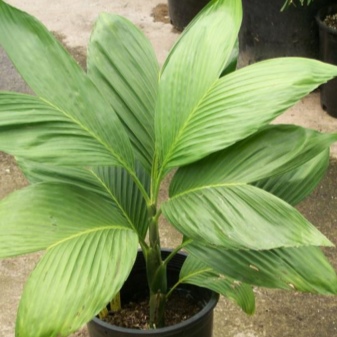
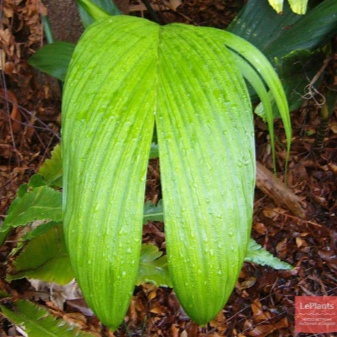
Elegance (Chamaedorea elegans)
In another way, this chamedorea is called graceful. It is a shrub plant with a creeping stem. Thin straight stems grow from it in not very large numbers, the height of which is from 1.5 to 2 m.The width of the latter usually reaches 2.5-3.5 cm.
At the tops of the stems there are peculiar panicles, which consist of 6 or 7 leaves located very close to each other. Over time, the leaves die off, and then fall off. As a result, characteristic ring-shaped marks of a light shade remain on the surface of the stems.
Hamedorea graceful attracts many flower growers, because grows well without requiring complicated care... Plant unpretentious, distinguished by a beautiful appearance.
It has compact dimensions, which is a plus for people living in small apartments, where there is no extra space for bulky green pets.
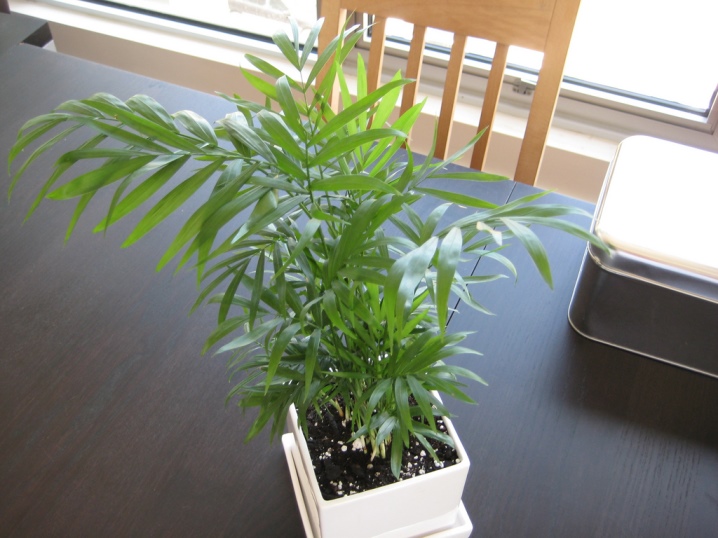
Metallica
A beautiful subspecies of the palm family. Culture is different the presence of wide leaves of a leathery type with an unusual silvery shade. The plant in question has only one trunk, which inevitably becomes thicker and lignified over the years. The culture can reach a height of 2 meters.
Metallica tolerates shading without problems and can grow well even in indoor conditions where there are small windows.
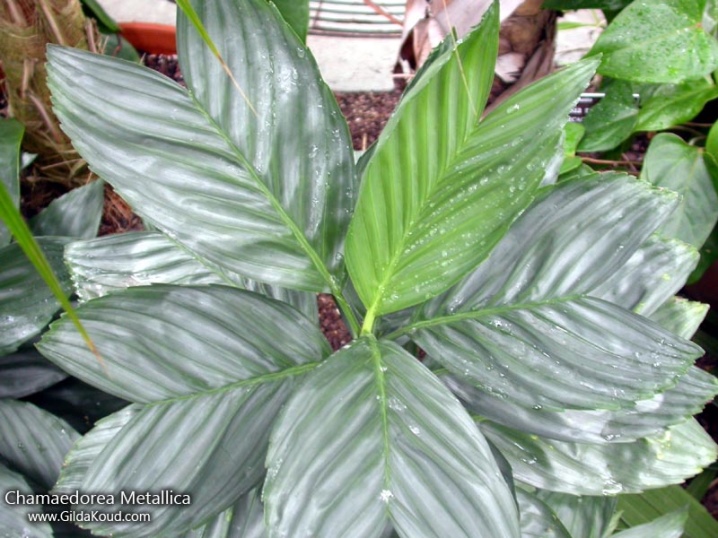
Monochromatic
Another popular type of hamedorea. Culture usually grows not too high. She feels especially comfortable in a greenhouse. The plant has light green leaf blades of a pinnate structure of small size. Monochromatic chamedorea has a reed-like stem.

Home care
Hamedorea feels great growing at home. The main thing – provide a comfortable environment for this adorable green pet. Let's take a look at how to provide hamedoree with optimal conditions for growth.
Seat selection
Indoor palms are allowed to be placed even in the shaded corners of the dwelling - in such conditions, they feel normal. However, shading should be moderate. It is not recommended to place your pet in too dark places. It is also not allowed to put it in direct sunlight - such conditions will be destructive for the plant.
Lighting must be moderate. A place in partial shade is suitable. The appearance of the palm tree will depend on the intensity of the light. The bright ultraviolet rays will simply burn out the foliage of the crop.
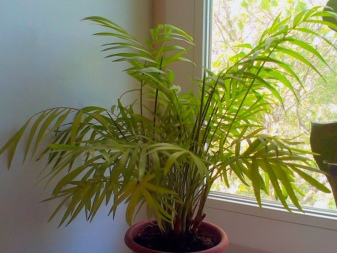
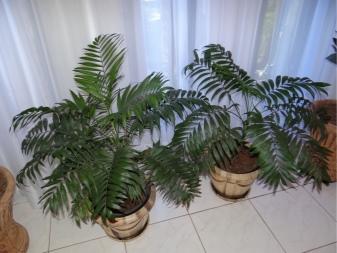
Hamedorea is divided into many subspecies, but most of them grow large. For such pets, it is advisable to allocate a sufficient place where they will not be too crowded. It is recommended to provide for hamedorea an area in the corner of the room, preferably close to the window openings. A partition located between the windows is also suitable for this. Here, the plant will look especially attractive and neat, and will also not interfere with household members.
When choosing the optimal space for hamedorea, one should not forget that too sharp a change in temperature values can have an extremely negative effect on the health of the crop. After the purchase, the palm tree must be placed where it will not be exposed to the harmful effects of drafts. Optimum temperature for keeping in summer – + 16 ... 20 degrees, and in winter – + 12 ... 15 degrees Celsius.
When it's summer outside, the area where the culture is located will need to be ventilated. From time to time, it is permissible to transfer the plant to a balcony or veranda so that it can be fed with fresh air.
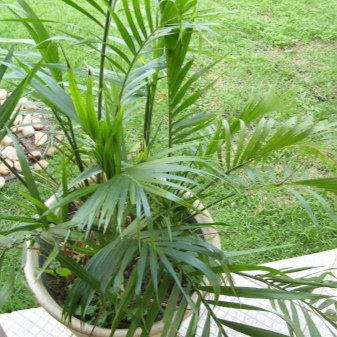
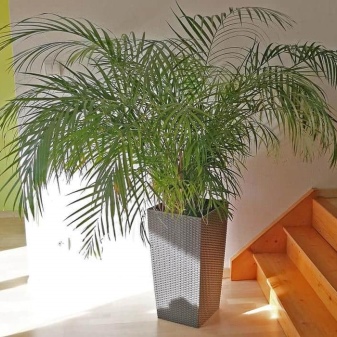
Soil for planting
Any suitable reservoir that is highly resistant can be used as a pot for the plant in question. The material of the vessel is unimportant. The main condition concerns precisely stability, because chamedorea grows tall, and its leaves are not the most spreading.
For compact palms, pots with a diameter of 12-15 cm are suitable, and for taller crops it makes sense to select tanks with a diameter of 16-25 cm.
Having picked up a pot for the plant, the size of which will correspond to it, you can start preparing the earth. A good-quality potting mix for the palm in question, ready-made, is sold at a garden store. You can buy the usual universal compound designed for planting indoor plants. It is also permissible to independently make a suitable mixture. To do this, you will need to combine such constituent components as peat, humus, river sand, sod land. All components are taken in equal parts. A drain must be placed at the bottom of the pot.
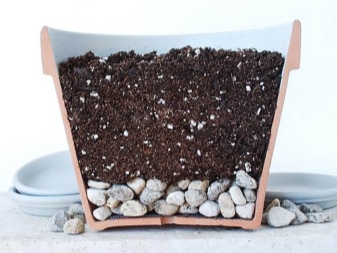
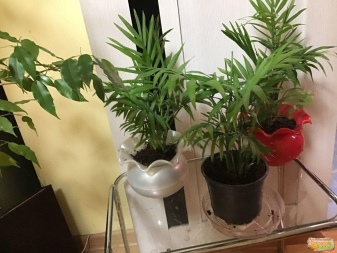
Watering
When caring for a room palm tree, you must remember about proper watering. We must look after the one so that the clod of earth does not dry out. But it is also not allowed to fill the pet with a huge amount of water - this will only cause serious harm to it. Wetland is the best condition for the formation of dangerous bacteria and aggressive pests.
The ground should always be slightly moist. - in everything you need to observe moderation. Liquid that will accumulate in the pan must be poured out regularly. We must not forget about it.
With the onset of the hot summer season, the plant will need more frequent watering. If we are talking about winter, then at this time of the year the process of plant growth and development slows down, so watering will need to be reduced.
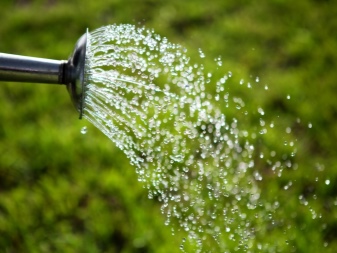
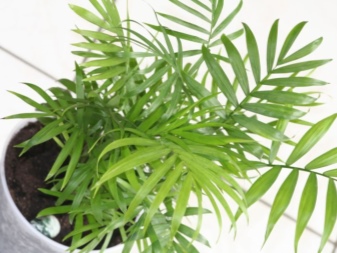
Top dressing and fertilizers
If you want to speed up the growth of your home palm, you should consider applying suitable fertilizers. It must be borne in mind that feeding the culture in question is required only at the moments when its active growth falls. This period lasts from early April to late September. It is at this time that fertilizers need to be applied 2 times a month.
The latter should be released specifically for palm trees. It is allowed to use mineral compositions of a universal type.
For good growth, some growers advise removing the peduncle from young crops.
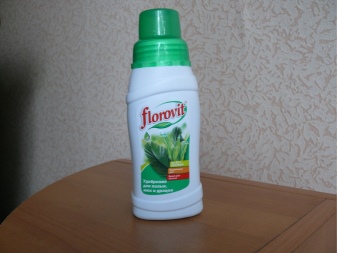

Transfer
There are florists who recommend transplanting hamedorea based on its age mark. Young plants will need this procedure annually, and adult pets - every 3 years. However, many professionals who have long been involved in the cultivation of such crops argue that a palm tree should be transplanted only as needed.
A transplant may be required in that situation if the pet has become too cramped in its pot. Then it will need to be moved to a more spacious container. As the palm ages, it may need to be planted in a barrel or special tub. It is much more difficult to move an adult pet, since it will have more impressive weight and will be voluminous. In situations like this instead of replanting, it is permissible to renew the topsoil.
The palm tree must be transplanted in case it has undergone any disease or many dangerous pests have appeared that can seriously harm the plant. If there is a process of soil acidification, it is also recommended to refer to the hamedorea transplant procedure.
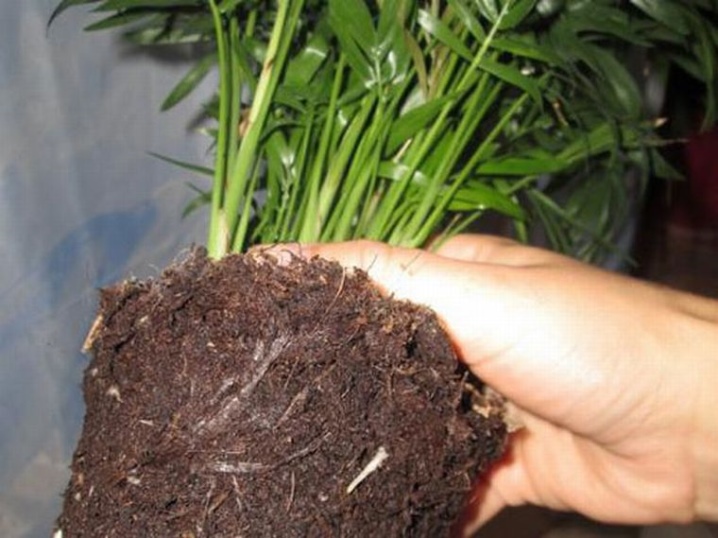
Reproduction
Reproduction of the considered domestic palm tree can be carried out in several ways: by seeds, division or shoots. Chamedorea does not reproduce by cuttings.
Seeds
Seed propagation of a palm tree is easy and does not take long. You will need to perform a number of manipulations.
- Before planting, the seeds must be soaked in water (this should take from 100 to 120 hours).It is advisable to add a couple of drops of a special complex-type fertilizer to the water.
- Prepare and disinfect small pots. Add a substrate made specifically for palm trees. Place 2-3 seeds in it and gently press down on them. It is allowed not to resort to backfilling with a substrate.
- Carefully cover each pot with plastic to create a greenhouse effect.
- Water the planted seeds every 2-3 days and air them once a day.
Seedlings will hatch no earlier than 3-6 months later.
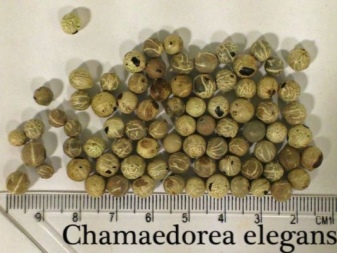
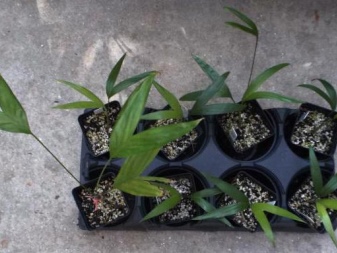
By dividing
With the onset of spring, the overgrown process of the palm tree must be taken and carefully removed from the pot. The earthen lump must be washed off under a water jet. After that, the bush will need to be divided into several parts.
Each of them must contain at least one healthy and well-formed shoot and good roots. Only in this case it will be possible to root the separated parts and get the desired result in the end. The washed and prepared parts are seated in pots.
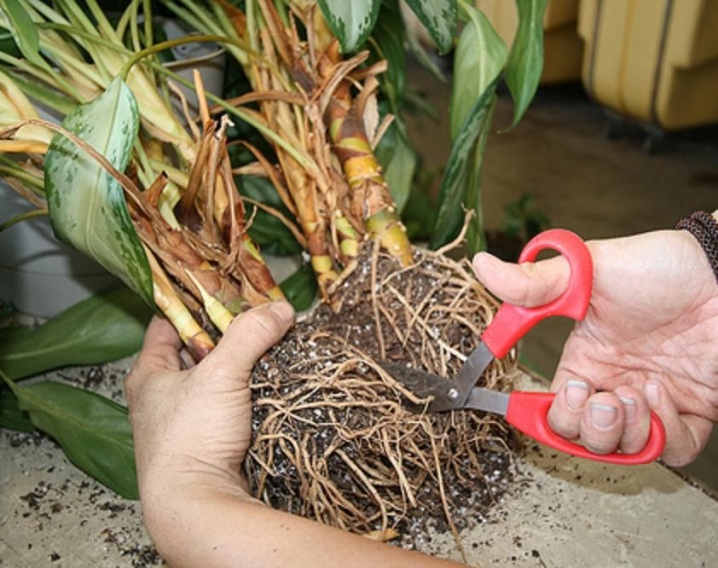
By shoots
This method of plant propagation has a lot to do with division. It differs only in that for this it is necessary to cut and use the root shoots, which subsequently need to be planted in separate pots.
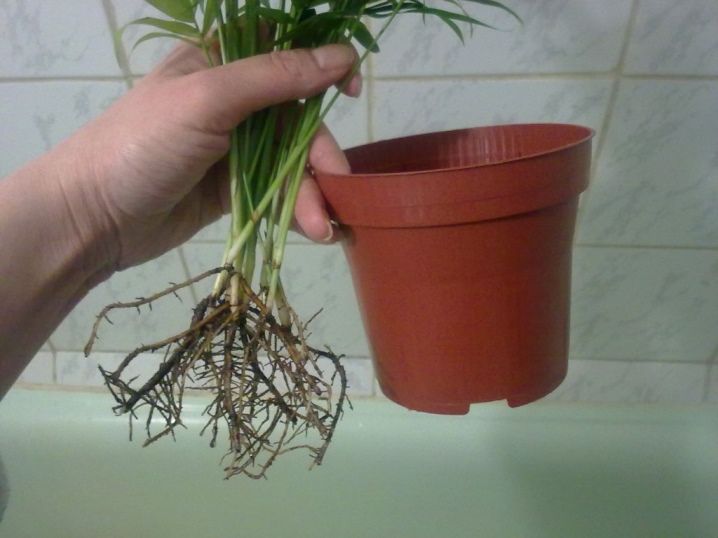
How to rejuvenate?
The plant can be renewed with adventitious roots on the stem. A noticeably bare palm tree can be rejuvenated with air layers.
But remember that the cut mother stem cannot give lateral shoots and then die.
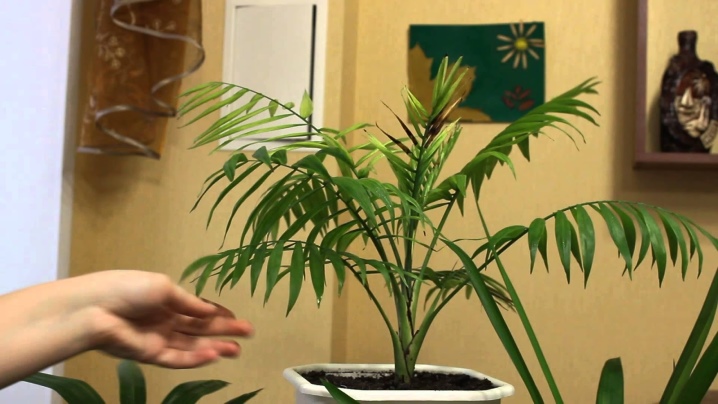
Pests and diseases
Hamedorea can suffer from certain diseases and parasites.
- Leaves turn yellow. The problem may arise due to low watering. In summer, the plant should not dry out.
- Brown spots on the leaves. The reason is waterlogging of the soil or a sharp drop in temperature. The affected foliage is removed, past mistakes in care are corrected.
- The tips of the leaves turn black. There are many reasons: weak or excessive watering, dry air, the influence of direct sunlight. It is worth reconsidering the care that you provide to the plant and the conditions in which it is located.
- Spider mite. Because of it, the leaves dry out, a white bloom may appear on them. Insecticides can help in the fight. A possible cause of the problem is a low level of air humidity (optimal - 50%). Insufficient watering also leads to drying out of the leaves.
- Leaves turn pale. There can be many reasons: chlorosis (lack of iron, it must be brought under the root), exposure to excess light (it is necessary to remove the palm tree from the window), replacement of the top layer of soil is required.
- The appearance of sticky substance and plaques on foliage. Indicates a scabbard attack. Insecticides will help in the fight if there are a lot of parasites. If it is not enough, you can get by with folk remedies.
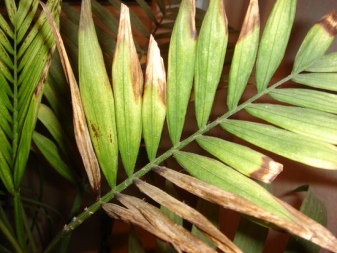
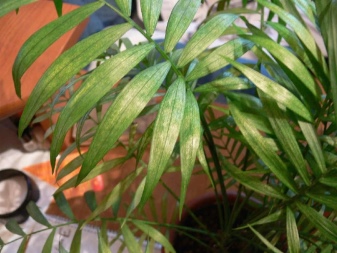
Examples in the interior
Hamedorea will look gorgeous in a large milk flowerpot against the background of an interior designed in snow-white tones.

Several palms in tall and narrow brown pots, arranged in a row, will harmoniously look against the background of beige walls and a light coffee-with-milk floor.
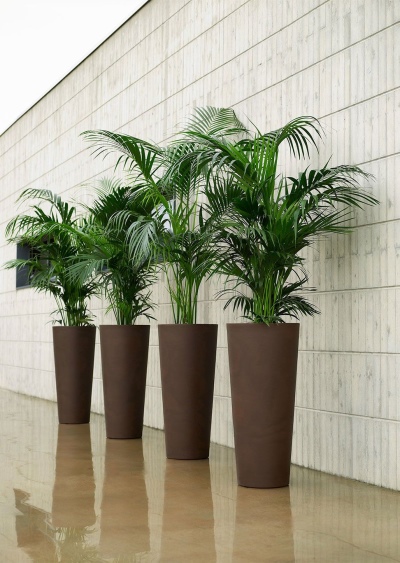
A bamboo palm tree growing in a wide brown flowerpot will look attractive from the corner of a bright room next to the window.
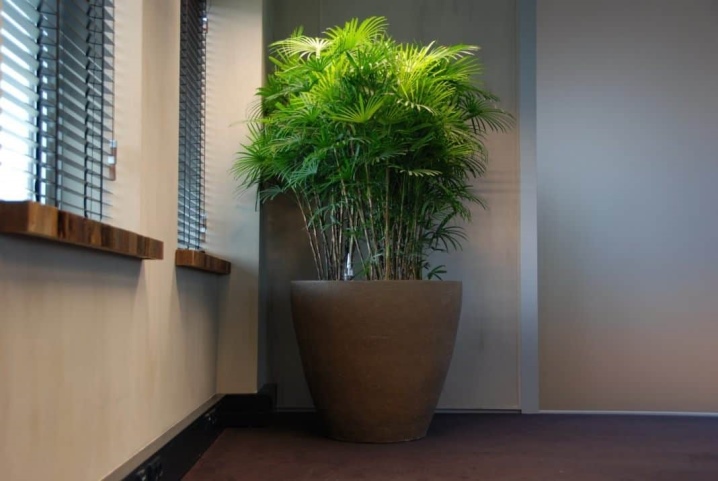
For more information on caring for chamedorea, see the next video.































The comment was sent successfully.